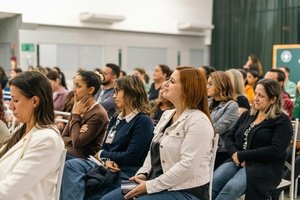Save your money.
Invest in something more certain to help your school – like buying lottery tickets.
When people are talking about “teaching the brain to read”, they are typically touting phonics instruction. You know, phonics, an instructional method developed in the early 19th century. Not exactly the spawn of modern neuroscience.
Teaching phonics is teaching the brain.
But then so is teaching word memorisation.
I don’t mean to be cavalier here – I do understand that neurologists have identified some provocative distinctions between decoding and word memorisation (we’ll get to that) – but let’s be honest: all cognitive learning is housed in the brain.
Much is made in those books and articles about how phonics is the right approach because it alters the brain. That latter claim is true as far as I can tell (I’m not a neuroscientist so reading such research gives me the heebee jeebees).
However, it is not just phonics that changes the brain. The same can be said about any kind of learning, education, physical exercise, meditation and so on. They all alter the brain in terms of the circuits that are formed and the brain’s physical properties (such as thickening the hippocampus).
So far, no instructional method has resulted from the study of the brain.
Probably the best treatment of the neurological study of the reading brain aimed at a general audience is the now somewhat dated book (first published in 2009), Reading in the Brain: The New Science of How We Read by Stanislas Dehaene.
That book has a bit of a split personality – it starts out writing checks that it can’t cash and ends up getting real. On page two, Dehaene claims: “The insight into how literacy changes the brain is profoundly transforming our vision of education and learning disabilities. New remediation programs are being conceived that should, in time, cope with the debilitating incapacity to decipher words known as dyslexia".
Sounds great! Yet if neuroscience is leading to new ways of teaching, then teachers want to get their hands on those innovations.
But if you were tantalised by that page two promise, you’re going to be disappointed by the practical directions that neuroscience proposes.
Dehaene argues for instruction in phonemic awareness (PA) and concedes that PA is not a prerequisite to reading (kids are likely developing PA and decoding simultaneously).
I agree with all of that, but none of those pedagogical conclusions come from brain science – Dehaene usually cites psychological studies to support that type of claim.
Other insights that he shares are that kids learn complex rules or patterns later than simple ones, and that repetition matters when it comes to learning.
Duh.
Dehaene’s own characterisation of these pedagogical claims: “A great many teachers will consider my recommendations redundant and obvious – but it does no harm to specify them” (Dehaene, 2009, p. 229).
Let’s get real.
Neuroscientific research can do one of two things when it comes to the teaching of reading.
One possible outcome is that it will identify a structural difference (say, between the brains of normal readers and those with dyslexia) or some puzzling neurological process – such as a circuit implicating an unexpected region of the brain.
These kinds of findings could, theoretically, lead to the development new assessments for the early identification of reading problems or suggestions for new and different teaching methods.
Neurological science has not yet led to such practical innovations. They might someday – that research should continue to be funded – but at this stage it hasn’t happened.
A second possible contribution that brain study can make is that it confirms what we already know. This kind of confirmational study is more about understanding the brain than how to teach reading. Such research offers possible explanations for why things work the way they do.
These studies have revealed that when we read words, we activate visual-phonological circuits in the brain. Such observations have led neuroscientists to conclude that phonics would possibly be more effective and/or more efficient than the teaching of whole words.
More recent studies (studies that were not yet available to Dehaene) go even further.
For example, in one fascinating investigation, subjects were either led to memorise whole words (with a made-up set of orthographic symbols) or to decode those symbols.
The decoding instruction led to neural processing like what is observed in the brains of proficient readers (Yoncheva, et al., 2015). Word memorisation led to processing more like what we do with pictures than with language.
The conclusion from such studies has been that it makes sense to teach phonics.
I certainly agree with that conclusion, but not because those studies are definitive. My assent comes from the fact that those conclusions are consistent with what psychological and pedagogical studies have repeatedly demonstrated for more than 60 years.
My reasoning isn’t:
“Oh wow, the brain coordinates both visual and phonological information when we read words. Man, I think we should try to teach kids to do that.”
It is more:
“That’s cool. These images of the brain show that kids coordinate visual and phonological information when they read words. I wonder if that is why reading instruction works better when phonics is included?”
I advocate phonics because so many studies show that kids do better in learning to read when that is part of their instruction. I do appreciate that these neurological findings appear to be consistent with those studies of teaching. This concurrence may give me greater confidence, but it would not make any difference in my practice.
Of course, it should be noted that the instructional studies can do more than just suggest possible benefits or efficiencies that could result from phonics – unlike the brain studies.
No, instructional studies will also provide me with guidance as to what the content of those lessons should be, the types of examples and explanations I should provide, the actions the students should be engaged in, their duration, and other practical specifics that are pedagogically essential if I am to teach something, but that are unheard of in brain studies.
Think about it. What if we had no instructional evidence that phonics improved reading achievement, but neuroscientists had scans of photographs showing that we connect visual and phonological information when we read words?
If that were the case, I would not be advocating the teaching of phonics.
Instead, I’d be calling for further research to evaluate this fascinating hypothesis in classrooms. The same way such information is handled by the medical community.
Neuroscientists identify unusual accumulations of plaque in the brains of Alzheimer patients. Based on that information, physicians don’t immediately start prescribing anti-plaque medications. They wait until there are medical studies showing that reducing plaque works. Despite the obvious conclusion from brain images that plaque causes this disease, further study was required and that showed that plaque removal (or plaque removal alone) is neither a cure nor a palliative.
Neuroscience is largely a correlational enterprise. Scientists analyse brain images and look for patterns and consistencies. That information is then translated into hypotheses and possible explanations for how those patterns connect to external behaviors and conditions.
In reading, most neural studies have explored how children read, not how they learn to read. Longitudinal studies, for instance, have been unusual (Wang, et al., 2023).
Until recently, fMRIs could be used only with the reading of single words. Because those studies couldn’t look at connected text, they were unable to consider the impact of semantic context (Junker, et al., 2023; Terporten, et al., 2023), how ambiguous words are processed (Mizrachi, et al., 2023), the role of morphemes (Marks, Eggleston, & Kovelman, 2024), font differences (Wu, et al., 2023), or anything else about how we process written language.
The newer studies, as they have looked at phenomena more like real connected reading, have not contradicted the explanations formulated from the images of single word reading, but time will tell.
Back in the 1960s and 1970s, there were studies that compared children who received little or no phonics with those who received a heavy dose of it. Most kids in both groups learned to read (albeit with less failure, greater average achievement, and better spelling ability in the phonics groups).
But what about those kids who learned to read successfully without phonics? How do brains take such different learning paths to get to the same neural processing outcome?
I don’t know the answers to those kinds of questions, but I do know that the explanations that have been provided so far tend to neglect variations in learning and processing (Debska, et al., 2023; Wat, et al., 2023).
My advice?
I wouldn’t look for a consultant who knows the neuroscience, but for one who has a deep understanding and appreciation of the findings of instructional study.
Your teachers don’t need to know how the brain processes single words, but what content if taught and what instructional methods if used are likely to be most successful in raising students’ reading achievement.
Except in the most general terms (e.g., teach phonics, encourage kids to read a lot), neuroscience has few practical suggestions that do any more than confirm what you and your teachers already probably know.
The article was originally published on the author's blog. Read the original article here.
References
Debska, A. M., Wang, J., Dziegiel-Fivet, G. K., Chyl, K. M., Wojcik, M. P., Jednorog, K. M., Booth, J. R. (2023). The development of orthography and phonology coupling in the ventral occipito-temporal cortex and its relation to reading. Journal of Experimental Psychology: General. https://dx.doi.org/10.1037/xge0001495
Dehaene, S. (2010). Reading in the brain: The new science of how we read. New York: Penguin Books.
Junker, F. B., Schlaffke, L., Lange, J., Schmidt-Wilcke, T. (2023). The angular gyrus serves as an interface between the non-lexical reading network and the semantic system: evidence from dynamic causal modeling. Brain Structure & Function. https://dx.doi.org/10.1007/s00429-023-02624-z
Marks, R. A., Eggleston, R., Kovelman, I. (2024). Brain bases of morphological awareness and longitudinal word reading outcomes. Journal of Experimental Child Psychology. https://dx.doi.org/10.1016/j.jecp.2023.105802
Mizrachi, N., Eviatar, Z., Peleg, O., Bitan, T. (2023). Inter- and intra- hemispheric interactions in reading ambiguous words. Cortex, 171, 257-271. https://dx.doi.org/10.1016/j.cortex.2023.09.022
Terporten, R., Huizeling, E., Heidlmayr, K., Hagoort, P., Kosem, A. (2023). The interaction of context constraints and predictive validity during sentence reading. Journal of Cognitive Neuroscience, 1-13. https://dx.doi.org/10.1162/jocn_a_02082
Wang, F., Kaneshiro, B., Toomarian, E. Y., Gosavi, R. S., Hasak, L. R., Moron, S., Nguyen, Q. T. H., Norcia, A. M., McCandliss, B. D. (2023). Progress in elementary school reading linked to growth of cortical responses to familiar letter combinations within visual word forms. Developmental Science. https://dx.doi.org/10.1111/desc.13435
Wat, E. K., Jangraw, D. C., Finn, E. S., Bandettini, P. A., Preston, J. L., Landi, N., Hoeft, F., Frost, S. J., Lau, A., Chen, G., Pugh, K. R., Molfese, P. J. (2023). Will you read how I will read? naturalistic fmri predictors of emergent reading. Neuropsychologia. https://dx.doi.org/10.1016/j.neuropsychologia.2023.108763
Wu, Y., Luo, C., Wang, Z., Xie, H., Huang, Y., Su, Y. (2023). A further specification of the effects of font emphasis on reading comprehension: evidence from event-related potentials and neural oscillations. Memory & Cognition. https://dx.doi.org/10.3758/s13421-023-01457-9
Yoncheva, Y. N., Wise, J., & McCandliss, B. (2015). Hemispheric specialization for visual words is shaped by attention to sublexical units during initial learning. Brain and Language, 145-146, 23-33. doi: 10.1016/j.bandl.2015.04.001.
















